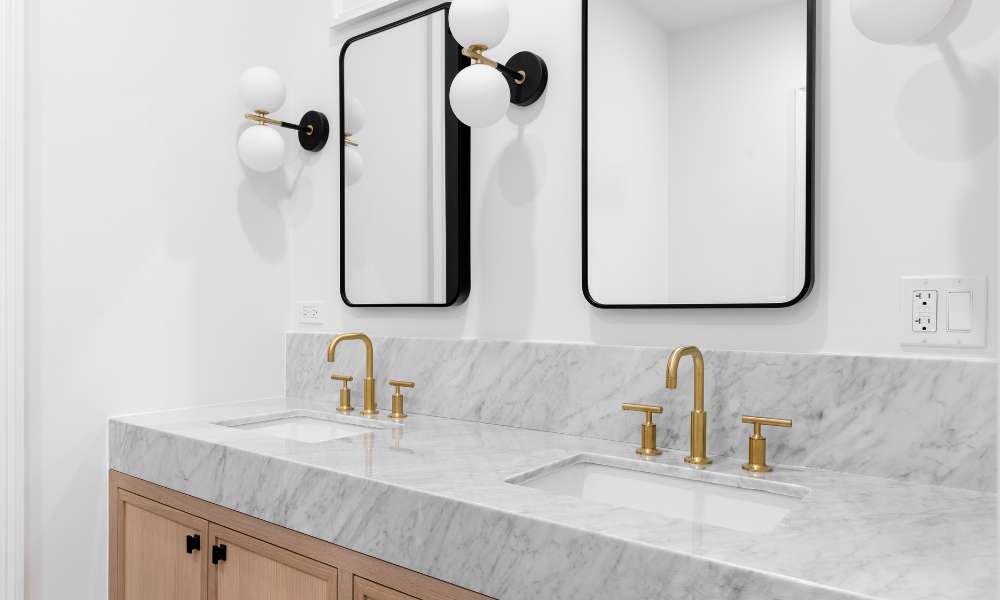When planning your bathroom design, every detail counts, and one essential element is the mirror height. You might be wondering, how tall should a bathroom mirror be to perfectly complement your space Getting the height right not only enhances the aesthetics of your bathroom but also ensures maximum functionality for daily use. In this post, we’ll explore the factors that influence the ideal mirror height, such as the sink and user height, design preferences, and other practical considerations. By the end, you’ll have a clear idea of how to position your bathroom mirror for a balanced, stylish, and user-friendly result.
Understanding How Tall a Bathroom Mirror Should Be

Choosing the proper height for a toilet reflection may additionally appear trivial, however, it’s a key element of bathroom layout that affects each aesthetics and functionality. A glass hung too high or too low disrupts the balance of the room, making daily tasks like shaving or applying makeup inconvenient. To ensure you have got the appropriate placement, it’s vital to not forget several factors your bathroom layout, the size of your vanity, and the needs of those using the space.
Factors To Consider When Choosing The Height
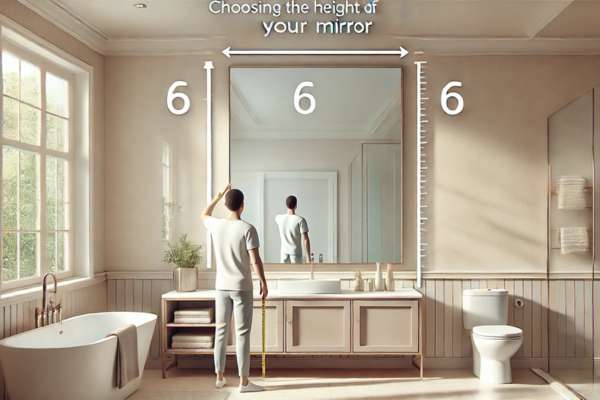
The ideal mirror height can vary depending on a few important factors. First, the height of the individuals using the bathroom matters greatly. For a household with users of diverse elevations, positioning the glass at an average eye level can provide the best compromise. Other elements consist of the elevation of the vanity, the size of the reflector itself, and the general style of the restroom. These elements need to be painted in concord to make certain both shape and function.
General Guidelines For Bathroom Mirror Height
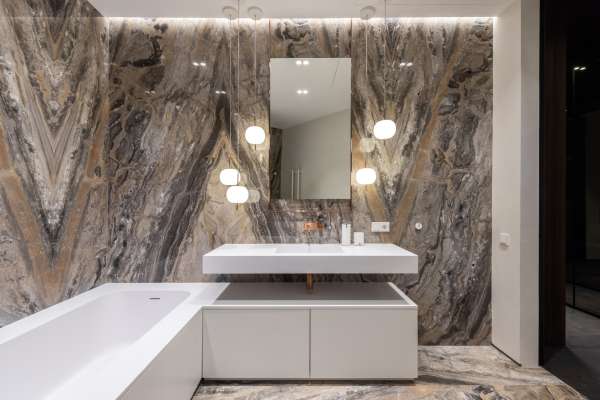
A commonly accepted rule for bathroom mirror height is to hang it 5 to 10 inches above the sink. Ideally, the center of the glass should align with the eye level of the average user. Most people find a reflector elevation of about 60 inches from the floor to be effective, although this may vary based on the elevation of the sink and the type of glass chosen.
Different Types Of Bathroom Mirrors And Their Height Requirements
Bathroom mirrors come in a variety of types, each with its own set of height requirements. For example:
- Standard Wall Mirrors: Often found in most homes, these require careful positioning to ensure they’re both functional and aesthetically pleasing.
- Full-Length Mirrors: These extend the entire length of the wall or sit just above the floor, generally not constrained by vanity height but should still reflect most of the user’s elevation.
- Decorative Mirrors: These may have ornate frames or unique shapes and should be placed slightly higher to emphasize their design without sacrificing usability.
Positioning a Mirror Above The Vanity
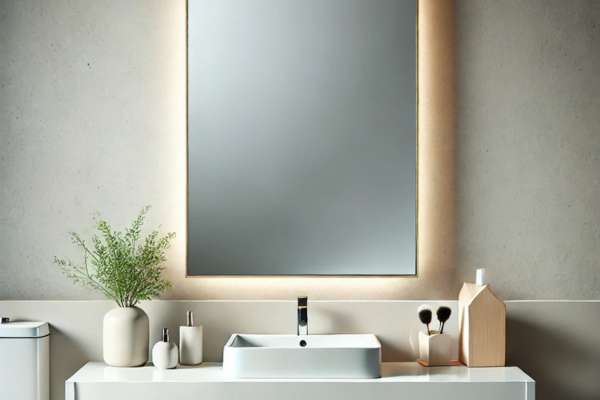
When positioning a mirror above a vanity, it’s critical to consider the height of the faucet and other fixtures. The glass should start just a few inches above the faucet to avoid any splash back on the glass, yet not so high that it forces the user to crane their neck. The glass often looks best when you center it vertically and horizontally with the vanity below.
Mirror Height For Double Vanities
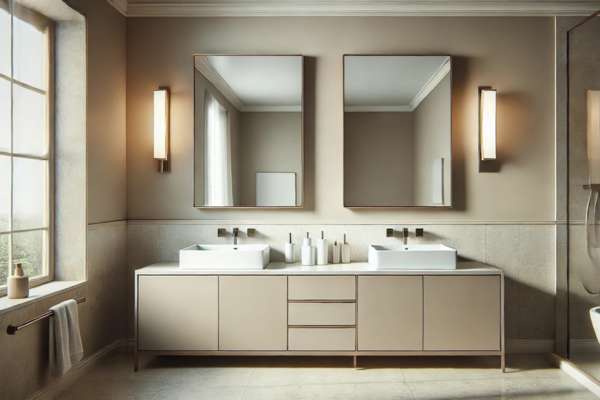
For bathrooms with double vanities, you have a couple of options. You can hang two separate mirrors over each sink or one large glass that spans both vanities. With individual glass, they should be centered above each sink and hung at a consistent height. If using one large reflector, position it so the center aligns with the average eye level, providing visibility across both vanities.
Adjusting Mirror Height Based On Bathroom Users
In homes with both adults and children, you may need to adjust mirror height or choose a style that accommodates various elevations. glass with adjustable tilts or larger sizes can accommodate a range of users by reflecting at multiple levels. This way, everyone can see their reflection without additional accessories or modifications.
Framed vs. Frameless Mirrors And Their Impact On Height

Framed mirrors can add a hint of fashion, however, additionally, they absorb extra vertical area. When using a framed mirror, you’ll need to account for the added inches and adjust the installation height accordingly. Frameless glass, on the other hand, is more flexible in elevation placement, allowing you to position them closer to the sink and faucets without compromising the design.
Selecting the Right Mirror Size And Shape

The mirror size and shape you select should not only match the style of the bathroom but also complement its functional aspects. Round mirrors work well in bathrooms with minimalist or modern aesthetics, and it’s best to hang them at average eye level, as their tops often sit higher than square or rectangular mirrors. Rectangular mirrors offer a wider view and can be positioned a bit lower if necessary.
Aligning The Mirror with Bathroom Fixtures
Bathroom glass should align with surrounding fixtures like lighting, vanities, and towel racks for a cohesive look. Ideally, your mirror should sit beneath any overhead lights to reduce glare and improve functionality. Aligning with the vanity and faucets will ensure the glass looks intentional, serving as a functional focal point rather than a random addition.
Proper Installation Techniques For Bathroom Mirrors
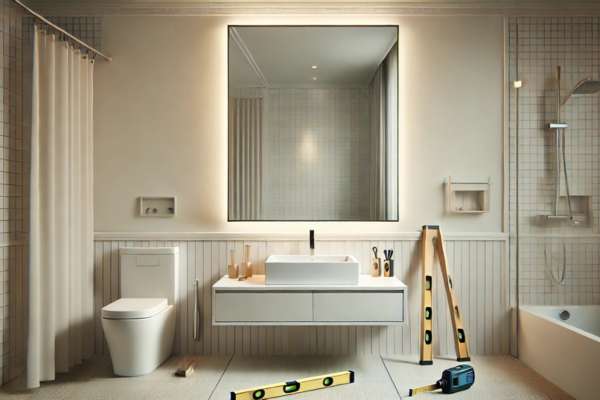
Proper installation is essential for both safety and aesthetics. The glass should be securely fastened to the wall, preferably with studs or anchors. Additionally, ensure the mounting hardware is compatible with the mirror’s weight, particularly for larger or framed glass. This will prevent accidents and provide a stable, long-lasting setup.
Mirror Height In Different Bathroom Styles
Mirror height can vary across bathroom styles. In traditional bathrooms, people often hang mirrors higher, featuring ornate frames and pairing them with sconces. Modern bathrooms, however, favor frameless designs positioned at lower elevation to create a sleek, streamlined look. Contemporary and minimalist bathrooms typically feature larger glass with minimal framing, aligned closely with the vanity to emphasize open space.
When To Hire a Professional For Mirror Installation
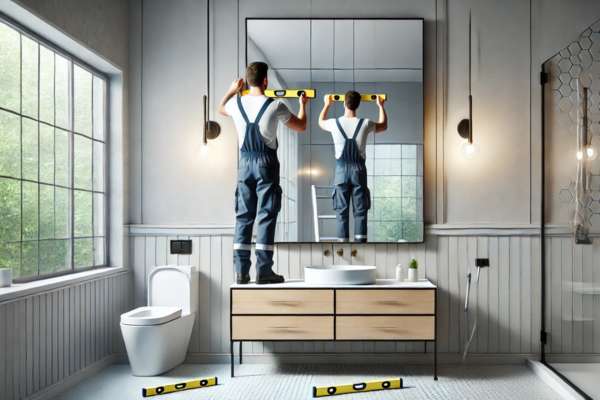
Many mirrors can be installed with basic DIY skills, but you’ll need professional assistance for large or heavy mirrors. A professional ensures proper mounting, protecting your wall and reducing the risk of the glass falling. Additionally, professionals can advise on optimal height and positioning based on your bathroom layout, saving time and effort in the long run.
Mirror Height For Special Bathroom Uses
In powder rooms or guest bathrooms, you can adjust the mirror height based on its purpose. Decorative mirrors in powder rooms are often placed slightly higher, as they aren’t typically used for close reflection tasks. For guest bathrooms, a standard reflector elevation works best, accommodating most visitors.
Conclusion
The top of your toilet reflects a pivotal position in each of the capabilities and visible appeal of the space. By cautiously considering factors like consumer top, bathroom style, and replicate kind, you can attain a balanced, efficient layout. Whether you’re opting for a single vanity glass, a pair above a double sink, or a grand full-length piece, the right mirror height will enhance your daily routine and add character to your bathroom. So, take the time to measure, plan, and, if needed, seek professional guidance to ensure your glass meets both your practical needs and design aspirations.

